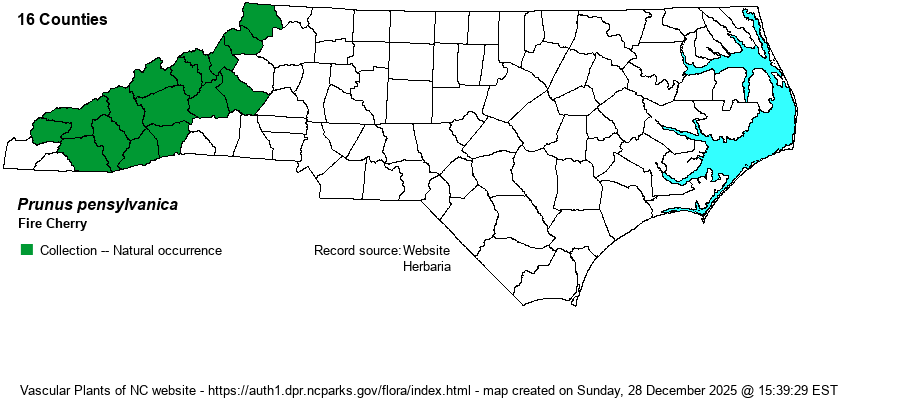| Author | L. fils | |
| Distribution | Strictly in the Mountains, mainly at the higher elevations.
This Northern species ranges south to PA, and then in the Appalachians south barely to northern GA. It ranges south to the Great Lakes states and to CO; it ranges far northward into Canada.
| |
| Abundance | Frequent to common, and a characteristic hardwood tree of the higher elevations, especially over 4000 feet. Scarce at lower elevations in the Mountains. | |
| Habitat | This species favors cool areas that have been fairly recently been disturbed, particular by fire but also by logging. Thus, it is a species of secondary (and not old growth) forests and edges, as well as thickets. It is most often found on rocky soils. |
| Phenology | Blooms in April and May, and fruits from July to September. | |
| Identification | This is a deciduous tree of small to medium height, usually to 40-50 feet tall, occasionally taller. As it occurs in formerly disturbed areas, it is not typically found in the full shade of forest interiors, but along edges and in thickets. The leaves are lanceolate and narrower than most other plum/cherry species in the state, barely 1 inch wide but about 3-3.5 inches long. The flower cluster is fairly broad (a corymb) and thus differs considerably from the narrow raceme of the Black Cherry (P. serotina). This species, the American Mountain-ash (Sorbus americana), and the Yellow Birch (Betula alleghaniensis) are generally the hardwoods that grow at the highest elevations in the state. | |
| Taxonomic Comments | No taxonomic issues, other than the occasional former spelling of the species name as pennsylvanica.
| |
| Other Common Name(s) | Pin Cherry is a frequently used name, as well. Bird Cherry and Red Cherry are seldom in use. | |
| State Rank | S4 | |
| Global Rank | G5 | |
| State Status | | |
| US Status | | |
| USACE-agcp | FACU link |
| USACE-emp | FACU link |

